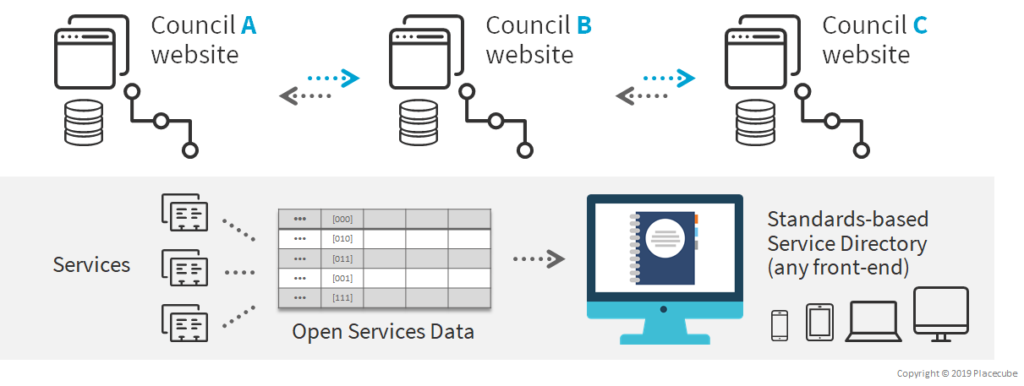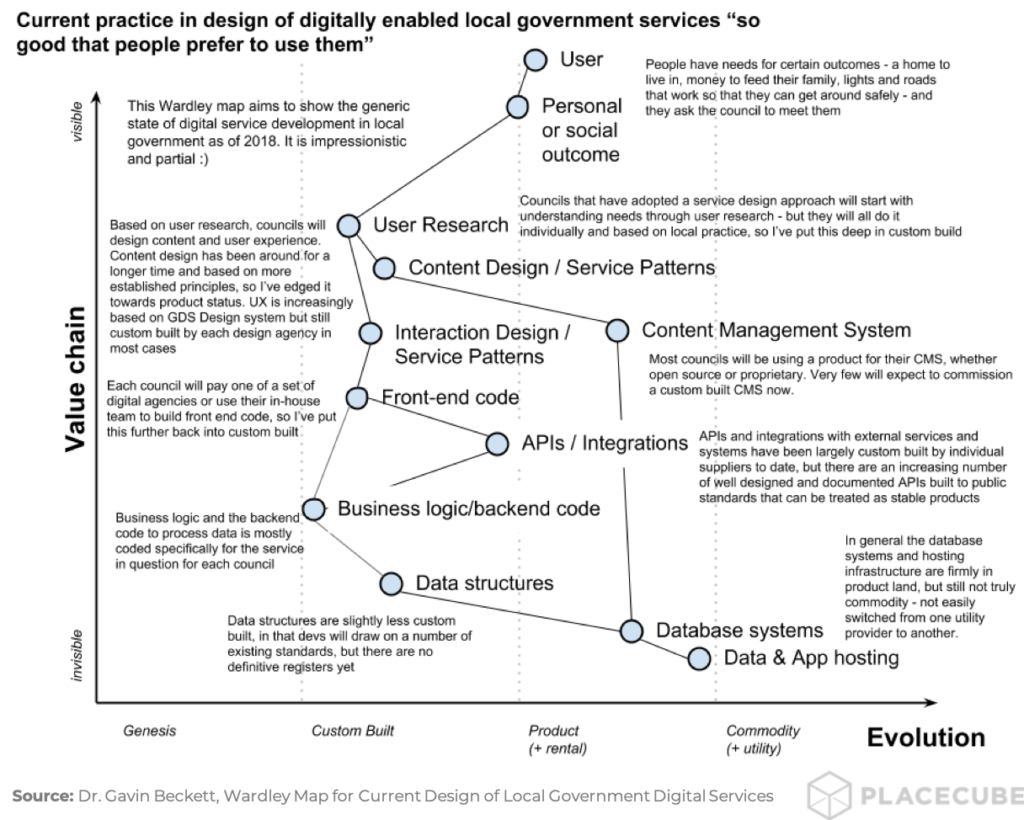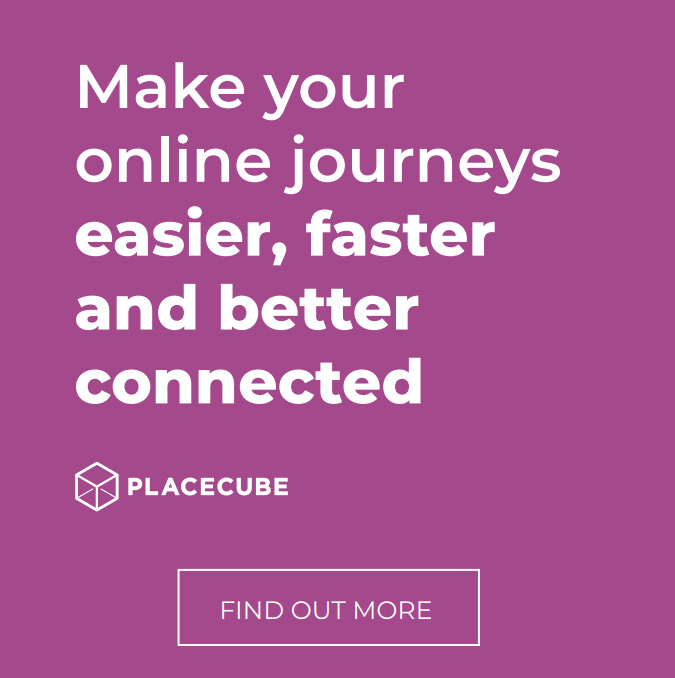Let’s look at the value of creating a product as a standards-based cube. Take the idea of a service directory – a data source that people with needs can search to find services that might meet them, and in which service providers can publish their details, so that connections can be made.
Over the past decade a number of providers have built their own directories and often linked them to their proprietary products for children’s or adults social care and family services. Each directory would be limited to a specific council area. And probably limited to an organisational remit – it may have been commissioned by the council to host a wide range of social care services but it’s likely it didn’t include NHS commissioned services, or things commissioned by Early Years to support wellbeing and pre-school education. So a person trying to find services would need to find and choose the right directory before they began searching for services. And often would find that the service directory was categorised in a way that made sense to experts who knew the terminology.
At the February 2019 MHCLG Local Digital Roadshow in Bristol, I listened to Tom Dixon from Devon County Council describing a common problem that the “Open Community” collaborative project aims to tackle – how should people living on the geographical boundaries of a local authority find services that are nearest to them, when the data is trapped inside separate directories? This and other issues are the reason that the project wants to develop a standard for service directories so that data is described in a common way, and APIs could be developed to enable searches across multiple directories.
So let’s assume that Council A has bought a standards-based directory service from Placecube, and that neighbouring Council B has bought a standards-based directory from another provider. Because we’ve both implemented the same data structures and APIs, a front-end website, or app, or aggregation service can interrogate both directories with ease and present results to someone looking for services that are hyper-local to them… just like you’d expect from a “search this area” interface on a map.

Building products to standards that mean they can connect to each other in known and repeatable ways helps us to move the market further towards the commodity end of the evolution axis. I reworked the Wardley Map from my last blog post to indicate where a range of activities and assets required for local digital services could move up the axis, deeper into the product + rental area.

Of course this assumes that a number of things change in Local Government – that the emerging improvements in collaboration that we have seen as the Local Digital Fund supports multi-council projects will be sustained, and that they will produce the kinds of valuable products that enable reuse. We need user research that’s published openly for all councils and suppliers to share through something like Hackney’s User Research Library, service patterns and design guidelines published in the way that the VerifyLocal team did – perhaps through the evolution of Pipeline and better signposts to council code on GitHub.
In a later post, I will focus in on how Placecube thinks of “reusable cubes” and the standard attributes that they need if we are to build an open ecosystem where multiple suppliers can provide a variety of services to organisations working across the network to support better outcomes for people in their local place.







